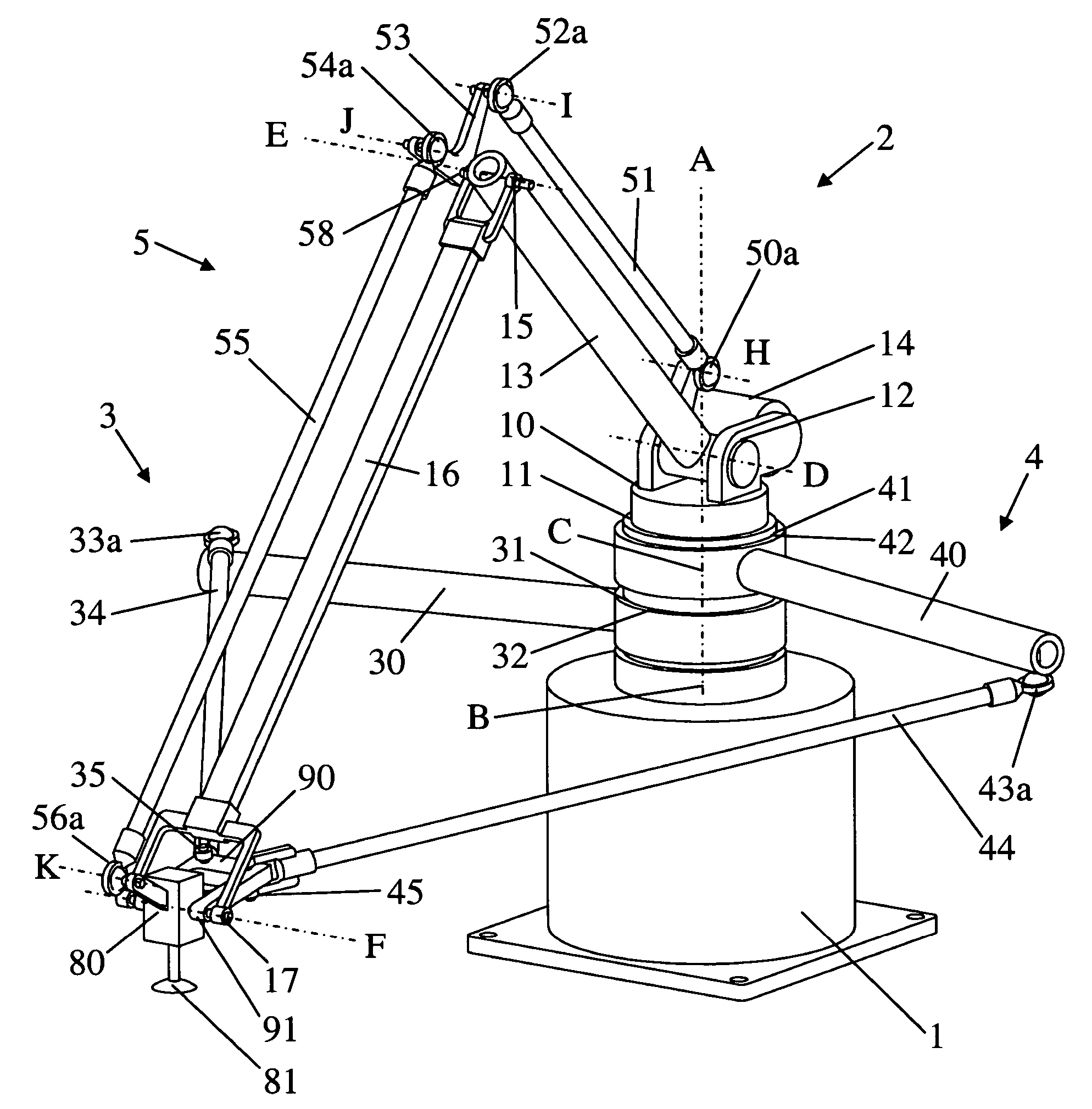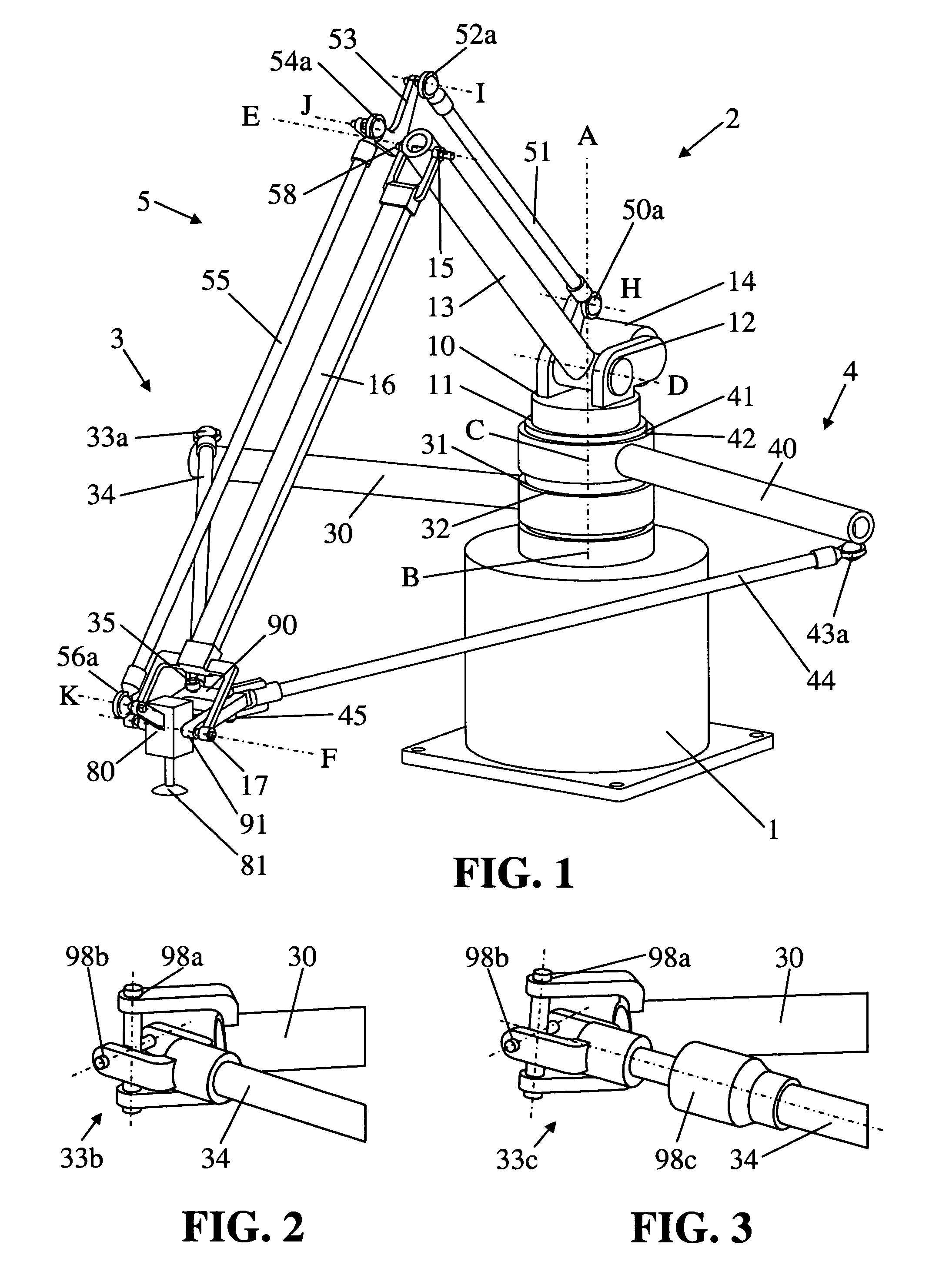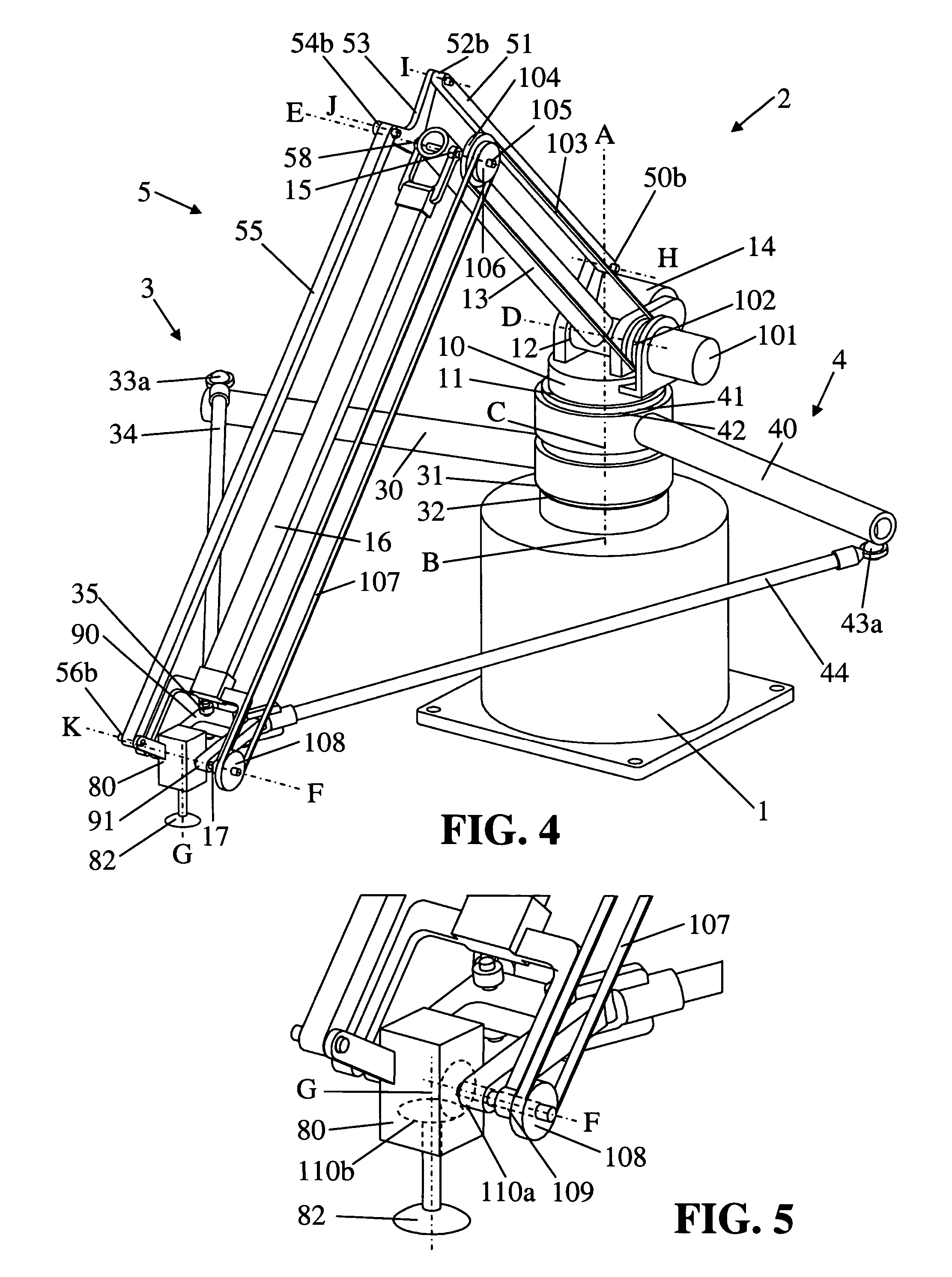Parallel robot
a robot and parallel technology, applied in the field of parallel robots, can solve the problem achieve the effect of large workspace-to-footprint ratio, small floor space, and small footprin
- Summary
- Abstract
- Description
- Claims
- Application Information
AI Technical Summary
Benefits of technology
Problems solved by technology
Method used
Image
Examples
Embodiment Construction
[0051]Now referring to the drawings, wherein like numerals designate like components, FIG. 1 shows a parallel robot or parallel kinematics mechanism, hence referred to by mechanism, constructed in accordance with teachings of the present invention. The mechanism includes a fixed base and is operable to position and orient an object in a cylindrical workspace with three degrees of freedom and retained inclination with respect to the base. A main arm and two supporting arms together determine the position and orientation of the object, while the main arm also retains the inclination of the object, as will be described.
[0052]As illustrated in FIG. 1, the mechanism comprises a base 1, a main arm 2, and a first and second support arm 3 and 4 interposed between the base 1 and the main arm 2. The main arm 2 includes a platform 10, an end component 80 for directly or indirectly supporting an object, and linkage means 5 interposed between the platform 10 and the end component 80. The main ar...
PUM
 Login to View More
Login to View More Abstract
Description
Claims
Application Information
 Login to View More
Login to View More - R&D
- Intellectual Property
- Life Sciences
- Materials
- Tech Scout
- Unparalleled Data Quality
- Higher Quality Content
- 60% Fewer Hallucinations
Browse by: Latest US Patents, China's latest patents, Technical Efficacy Thesaurus, Application Domain, Technology Topic, Popular Technical Reports.
© 2025 PatSnap. All rights reserved.Legal|Privacy policy|Modern Slavery Act Transparency Statement|Sitemap|About US| Contact US: help@patsnap.com



